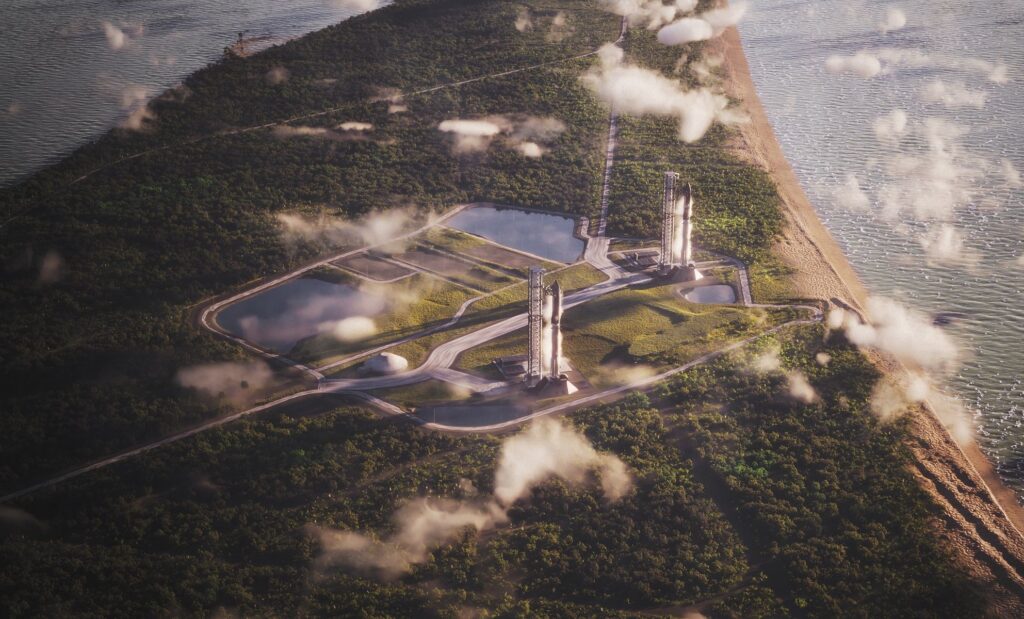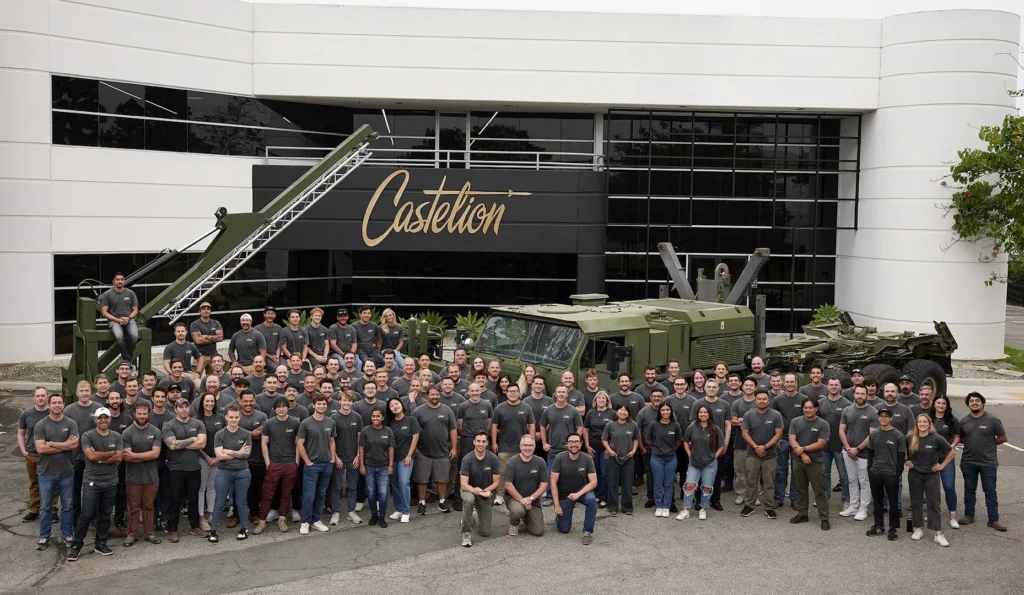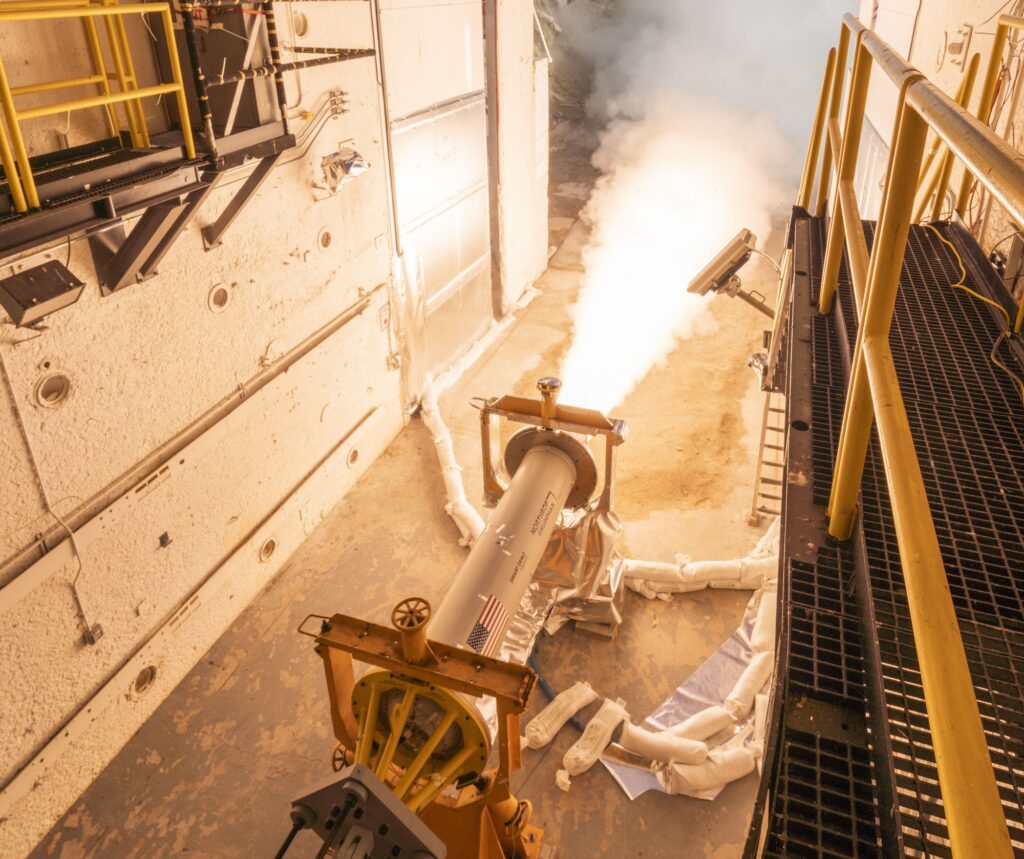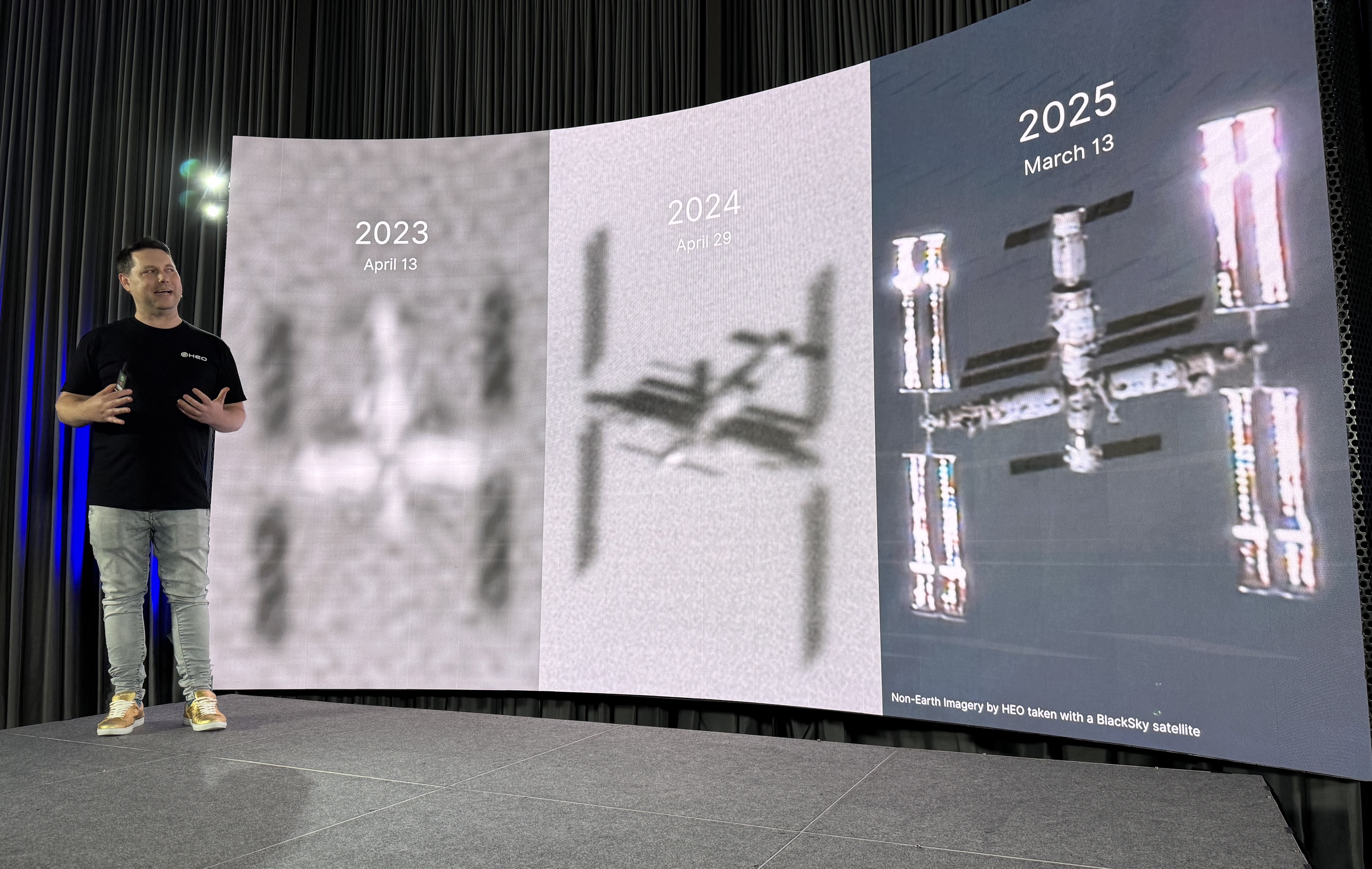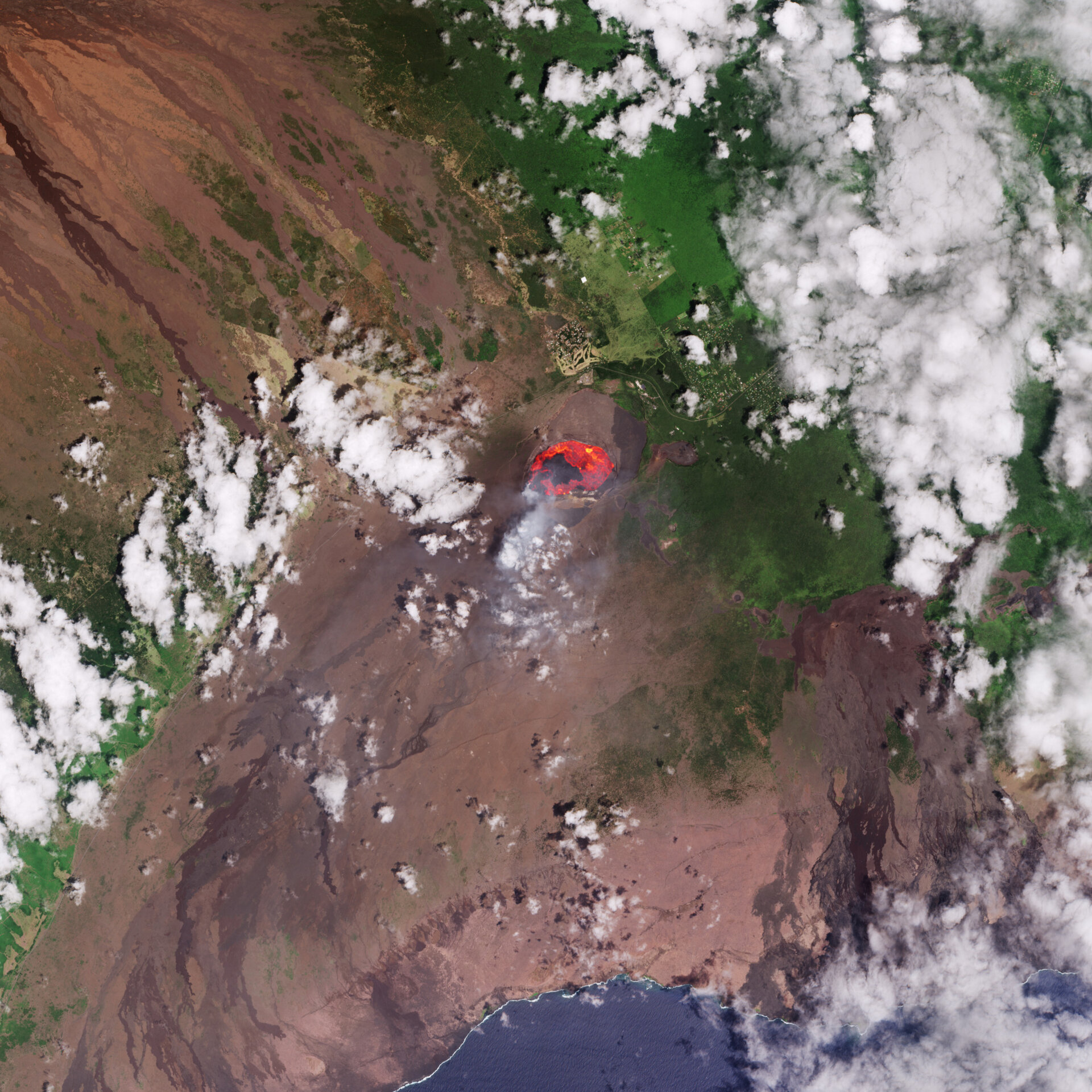Now Reading: Starlab partners unveil full-scale mockup of commercial space station
-
01
Starlab partners unveil full-scale mockup of commercial space station
Starlab partners unveil full-scale mockup of commercial space station
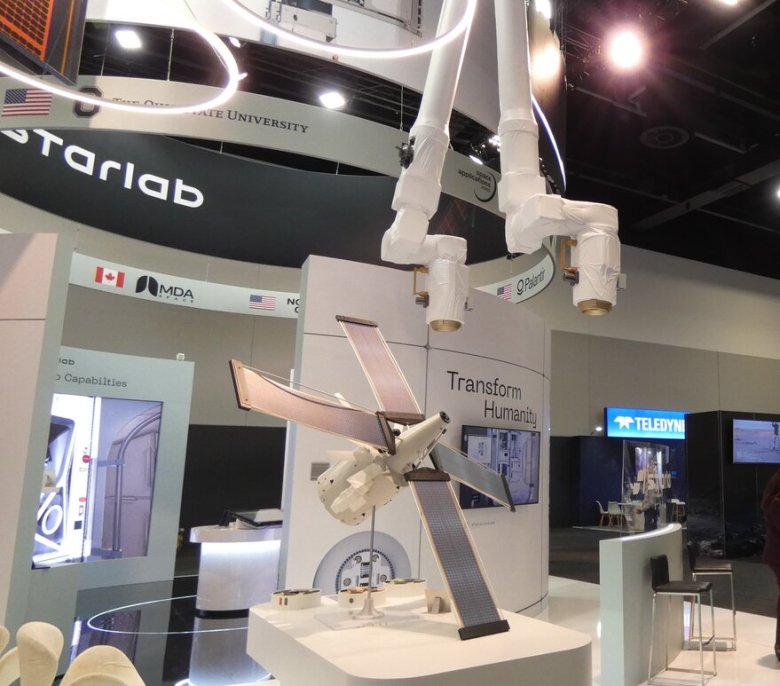
SYDNEY, Australia – Starlab Space unveiled a full-scale mockup of the commercial space station at the International Astronautical Congress here.
“We’re showing how large the station is going to be — 100% of the capacity of ISS,”
Matt Magaña, president of space, defense and national security for Voyager Techogies, the majority partner in the Starlab joint venture, told SpaceNews. “People are just in awe.”
Visitors to the Voyager display, including hundreds of children who flocked to the venue with their parents Friday on IAC public day, saw the large windows, payload racks and external robotic arm supplied by Canadian partner MDA Space.
Voyager is leading development of the 7.8-meter-diameter Starlab in a joint venture with international partners Airbus, Mitsubishi Corp., MDA, Palantir Technologies and Space Applications Services.
Belgium-based Space Application Services, an engineering and payload-integration specialist, is Starlab’s latest joint venture partner and investor.
“SpaceApps contributes deep experience in space systems, mission operations and payload integration,” Voyager said in an Oct. 1 news release. “The company also works closely with the European Space Agency and international partners, broadening Starlab’s access to global markets and research communities.”
Starlab also announced Oct 3 that Saber Astronautics, based in Australia and the United States, would become a channel and implementation partner. “Saber Astronautics will play a dual role: driving business development by engaging new customers for Starlab’s microgravity platform and providing technical execution services including feasibility assessments, hardware integration and in-orbit operational support,” according to the news release.

Inside Starlab
Starlab’s main habitation volume includes three 2.2-meter-tall levels. Life support systems, toilets and exercise equipment are located on the first level. The next level up houses the equivalent volume of 130 middeck lockers for research and technology demonstrations.
The crew quarters on the third level have two observation windows oriented toward Earth and two aimed at the horizon. Visitors to the mockup saw the Leidos galley rack where crews will prepare food.
“We already have quite a few customers that are booking space on Starlab,” said Courtenay McMillan, Starlab Space mission segment lead. “We’re operating in a real estate mode. We’ll lease the majority of the space in middeck lockers to the customers for the duration that they have experiments up there.”
Starlab also will offer customers access to microscopes, centrifuges, cold stowage and other equipment and supplies.
Structural Partner
Days before IAC, Starlab selected Vivace Corp. to manufacture the space station’s aluminum-based primary structure in New Orleans. Additional development and testing will be performed at NASA’s Michoud Assembly Facility in Louisiana.
“Selecting Vivace to lead the manufacturing of Starlab’s primary structure is a major milestone,” Starlab CEO Marshall Smith said in a statement. “Starlab is meticulously engineered to deliver scalability, reliability, and mission-critical research to our partners. This collaboration is instrumental in transforming that vision into reality, perpetuating the ISS legacy, and ensuring NASA and its international partners continue to have seamless access to orbit in the post-ISS era.”
Stay Informed With the Latest & Most Important News
Previous Post
Next Post
-
 012024 in Review: Highlights from NASA in Silicon Valley
012024 in Review: Highlights from NASA in Silicon Valley -
 02Panasonic Leica Summilux DG 15mm f/1.7 ASPH review
02Panasonic Leica Summilux DG 15mm f/1.7 ASPH review -
 03How New NASA, India Earth Satellite NISAR Will See Earth
03How New NASA, India Earth Satellite NISAR Will See Earth -
 04And Thus Begins A New Year For Life On Earth
04And Thus Begins A New Year For Life On Earth -
 05Astronomy Activation Ambassadors: A New Era
05Astronomy Activation Ambassadors: A New Era -
 06From Polymerization-Enabled Folding and Assembly to Chemical Evolution: Key Processes for Emergence of Functional Polymers in the Origin of Life
06From Polymerization-Enabled Folding and Assembly to Chemical Evolution: Key Processes for Emergence of Functional Polymers in the Origin of Life -
07SpaceX launch surge helps set new global launch record in 2024












